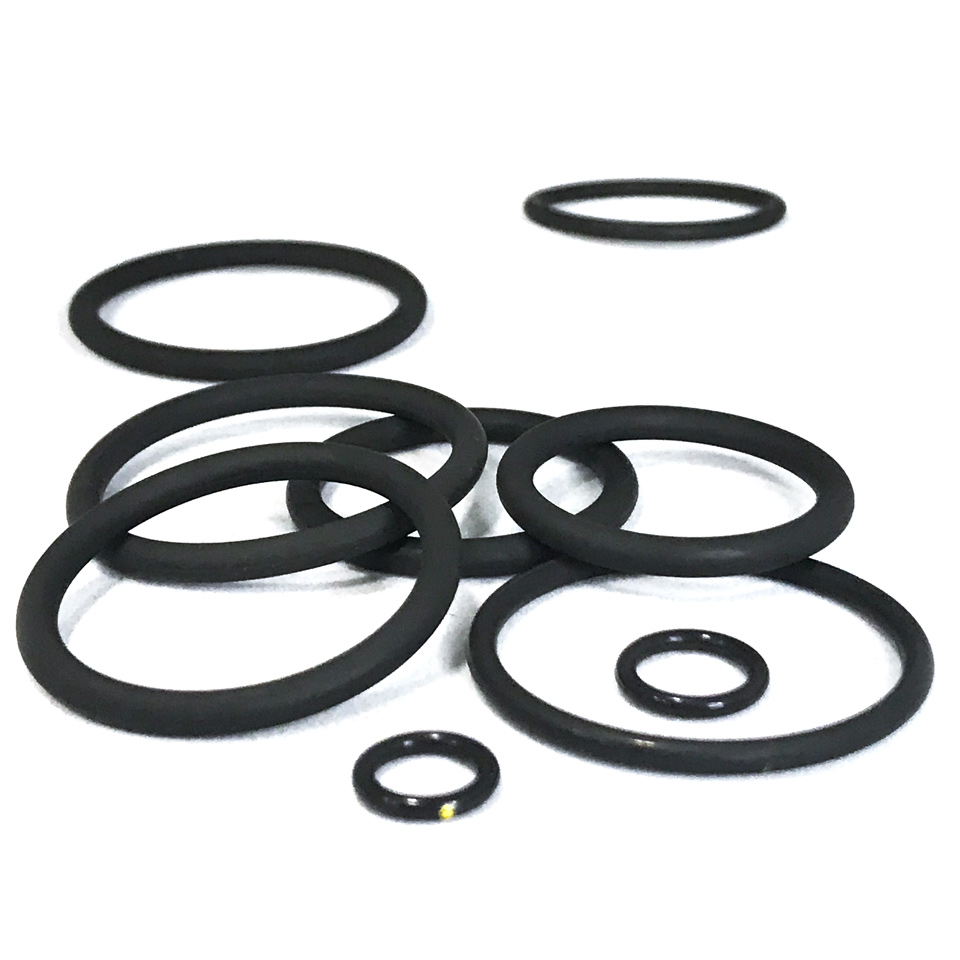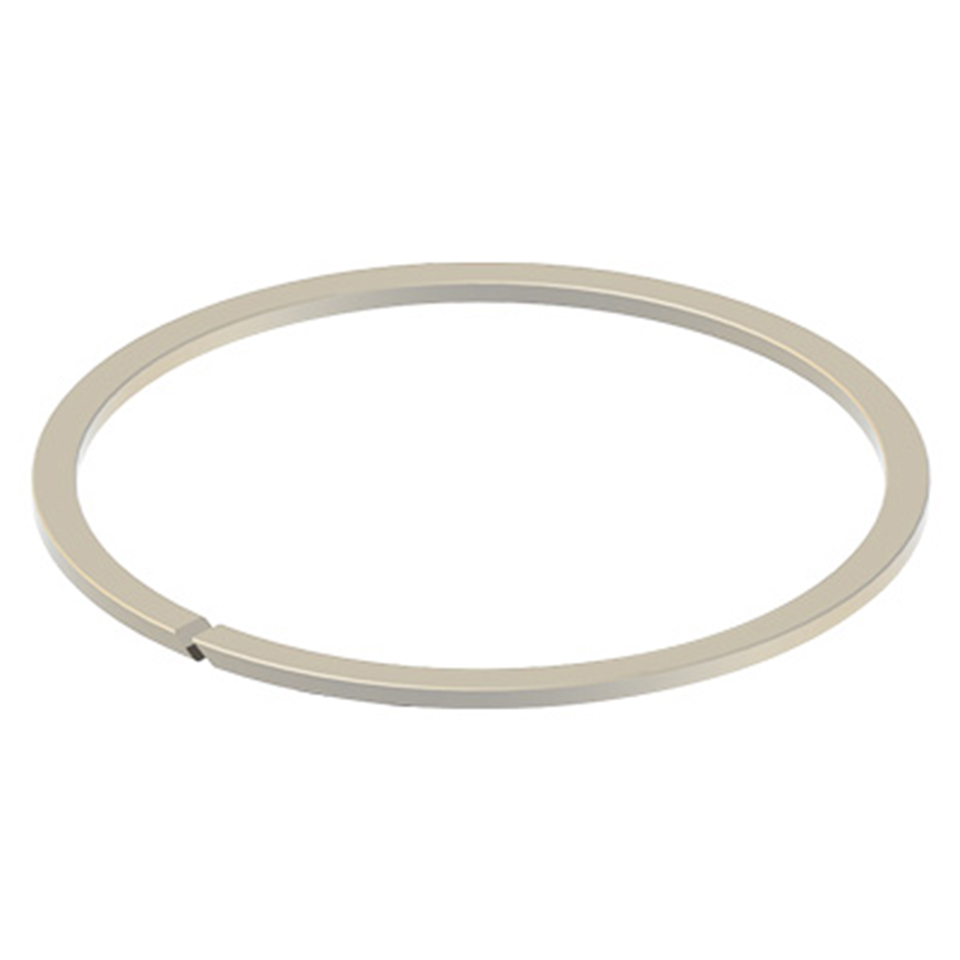

O-Ring Seals
O-ring seals are the air and water tight connectors placed between two pieces of machinery. The round elastomeric O-ring sits in a gland, which is a groove in the metal part designed as a cavity to keep the O-ring in place. The seal compresses between the two machinery components and prevents the loss of fluid or gas. O-ring seals are components in pressure systems, in hydraulic lifts, aircraft lubrication systems and automotive joints.
O-ring seals are used to make dynamic seals on reciprocating or rotating machinery, including pistons, cylinders and rotating shafts. When the o-ring is working as a seal between two moving pieces, such as those just described, a lubricant is necessary to protect the o-ring from quick and steady deterioration. Other protective measures for o-rings include a thin Teflon sleeve, since its strength can protect a weaker but more flexible rubber from wear and corrosion. O-ring seals can sustain a wide range of pressures, temperatures and tolerances. Depending on the material they are made of and the industry they are employed in, their working lives differ in length. Aviation, automotive, aerospace, food and beverage, chemical processing, water treatment, industrial manufacturing and oil refineries are all industries that make steady use of o-rings and the products that require their seal. The production of o-rings is simply heat, mold and cool, although a few styles require curing or die cutting. Such a simple product is never-the-less complex in its precise and useful design that is very important to many industries.
O-rings are generally made from a flexible material such as rubber, like silicone, Viton, neoprene, polyurethane, and ethylene-propylene. For certain specific applications they can be made of hard, rigid material like Teflon. Metal o-rings are also available, often made from copper, steel alloys, gold or aluminum. These metals are also used to fill the gaps in plastic o-rings, while the plastics are used to fill in space in the metal o-ring fabric. In order to maintain a consistent and reliable seal, o-ring material must not become brittle or rigid under low temperatures or melt under high heat, which could result in serious machinery damage and malfunction based on gas or liquid leaking. O-rings are fabricated specially to be able to withstand serious temperature and pressure. Because abrasion against the walls of the machinery may cause O-ring failure, the contacting surfaces should always be polished around the seal.
What Are O-Ring Seals?
O-rings are a type of seal that are used in cylinder-shaped applications. The O shape of these rings gives them the name O-ring. However, O-rings are not always O-shaped. You can also find rectangular and X-shaped O-rings. In fact, you can get precise O-rings designed and engineered by an expert manufacturer to improve the functioning of your application.
These seals stop water, air, and other media from passing or leaking through the joints and cracks in an application. They are one of the most commonly used seals in industrial machinery and components. Also called a packing or a toric joint, an O-ring is simple in design. O-rings are economical, convenient, versatile, and efficient – these are some of the biggest reasons why these sealing rings are used in a large number of tools and machines.
Materials
These mechanical seals are available in many materials, such as copper O-rings, Teflon O-rings, rubber O-rings, and silicone O-rings. From rubber to plastic and from fiber to metal O-rings – industries use a variety of seals in their applications. These seals are also available in polyurethane, neoprene, nitrile, and fluorocarbon materials. The material selection is largely dependent on the type of application for which it is being used. For simple and light-duty applications, rubber and plastic seals are a preferred choice. For heavy-duty and robust applications, metal O-rings are used. Chemical plants use special grade materials that do not react or fade away under the influence of chemical and highly reactive gases and fluids.
Applications
O-rings come with various advantages that encourage manufacturers to use them in their applications. These low-cost tools can be installed easily in many applications to avoid leaking, wearing, and tearing. However, you will need to ensure that they have been installed and are being cared for correctly. In fact, an appropriately installed O-ring seal can prolong the life of the application it is used for.
As stated earlier, the key purpose of using O-shaped seals is to avoid leaking of media into and from an application. They are used in hydraulic cylinders. Hydraulic cylinders are known for heavy hydraulic pressure. A great amount of pressure is on the seal, placed between the two joints of the cylinder. O-rings can efficiently bear and level that pressure.
In addition to these benefits, these seals can work efficiently in various environments. However, you will have to choose O-rings made from materials that are ideal for your process environment. Whether you are looking for O-rings for a motionless environment or vacuum, or for underwater or high-pressure applications – a supplier can provide you with a tolerable and long-life O-ring to fit your specific requirement.
Some of the most common applications that have some kind of O-rings in their design are computers, laptops, televisions, mobile phones, gas burners, cars, motorbikes, etc. Spaceships, airplanes, and submarines use specifically designed and engineered O-rings to prevent the passing of media from inside to outside or vice versa.
Given the critical roles these seals play in an application, their importance cannot be ignored in relation to the technological progress human beings have made.
Share this Post



